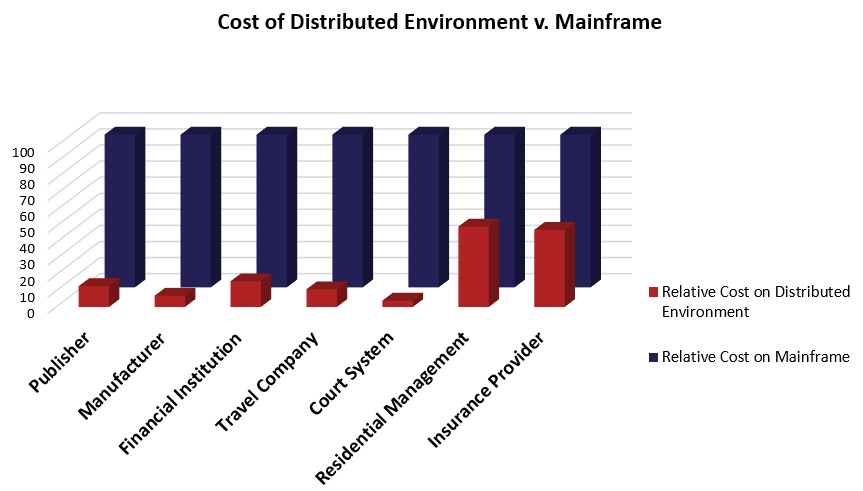Adam Redd is vice president of development for GT Software.
New expectations from customers, internal operations leaders, employees and competitors are forcing companies in a variety of industries to innovate and do so quickly. So how can an IT department best align technology with business objectives to meet this escalating pressure for innovation? And more importantly, how do they do it and keep within ever-tightening budget constraints?
What’s Keeping Business and IT Leaders Up at Night?
With these complex business demands taking center stage, CIOs and IT professionals—along with their functional peers in marketing, finance and operations—must recognize the need to come together to create innovation while simultaneously holding the line on costs. If not, they stand to lose a competitive edge.
Where do we look for cost-reduction opportunities and efficiency? At first glance, the “big iron” in the data center may not seem like a revenue generator or an asset that can support innovation. But guess again. By modernizing the powerful mainframe hardware that already supports an organization’s most critical business applications and houses its valuable data, businesses can unlock tremendous cost savings, and pave the way to efficiency and new revenue streams.
Correctly Accounting for a Mainframe Asset
Modernization or migration should begin with an assessment of the data center IT infrastructure. The idea is to create a roadmap for achieving improved performance, operational support and cost-management.
This assessment should incorporate an audit of current (hard) IT investments, including software and license fees, maintenance and support, IT talent, and hardware expenses. In addition, the soft costs should be evaluated. It is important to examine the potential risk and costs associated with disrupting the current applications on the system by evaluating the time, effort, and knowledge capital required for the project.
With a handle on the costs associated with current operations, you can then look into deploying modernization or partial migration projects, and evaluate the associated savings, as the cost differences between pre- and post-mainframe modernization can be staggering. An average of actual savings from migrating off the mainframe to Microsoft Windows can be seen in the figure below. As the chart suggests, the ROI of a mainframe migration can be significant and can come rapidly after migration completion.
Modernize or Migrate?
Generally, decision makers who choose to modernize or migrate legacy systems are part of the IT group and don’t always interact with their functional peers across lines of business.
This can be a drawback since an entire organization’s operational processes should be considered when measuring cost savings or potential operational improvements. IT leaders with a big-picture-perspective frequently include operational business units such as marketing, customer service and procurement in their decision-making. Doing so not only helps to build the business case and internal buy-in, it can also better showcase IT’s strategic value. Additionally, getting this perspective helps provide insight into ways for IT to offer further innovation and added value to the business.
In the end, a thorough understanding by all stakeholders can mean the difference between success and failure, and no matter which is chosen – data modernization or migration – there is little room for error.
Modernization—Integrating with newer technologies and modernizing the mainframe is a dependable way to extend the ROI of IT systems, as well as improve strategic services in marketing, finance, sales and other areas of the organization. Whether you want to improve operational performance with easy mobile access to business-critical solutions, or unify your data from disparate sources for a comprehensive view of enterprise data, integration using the right tools can make it simple.
You’ll want to find a solution that enables easy interaction, integration and information orchestration across your mainframe and other platforms to give your mainframe a new lease on life and help empower customers and employees via easy access to mainframe information and applications.
Migration—Migration involves moving legacy technology to newer platforms. Like modernization, a migration path can deliver significant cost savings, yet poses substantial inherent risk. However, migration can be simplified by using tools that automatically convert data from one form to another. There are also tools to convert the code from one platform to another to be either compiled or interpreted. An alternative to converting the code is to employ software that can translate the code from the old system on the new system. For companies where full migration is simply not an option, targeted migration of specific applications or batch processing is a viable option that also results in significant savings.
Third-Party Analysis Reduces Risk
Whether migrating or modernizing, the best solution is to work with a vendor that has no stake in that decision. Such a provider will drive the project based on objective evaluations of the current infrastructure and strategic business needs, taking into account existing systems, costs, potential savings, time commitments and risk. An effective third-party vendor can also navigate the perceptions and preferences of internal staff, as there will be favoritism of one platform over another and perhaps even some political motivation behind well-intended decisions.
Innovation: The Mainframe Holds the Key
In the end, when aligned with strategic business objectives, new applications and services enabled by the mainframe can add significant value by empowering customers, business partners and employees. They can also improve customer service, reduce administrative time and costs, and greatly improve an organization’s operational efficiency and thus extend the ROI of mainframe investments to support continued innovation and maintain a competitive edge.
Industry Perspectives is a content channel at Data Center Knowledge highlighting thought leadership in the data center arena. See our guidelines and submission processfor information on participating. View previously published Industry Perspectives in our Knowledge Library.






